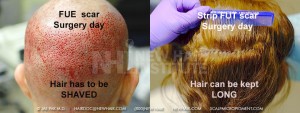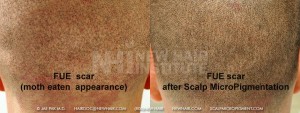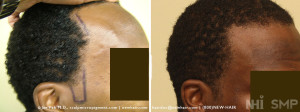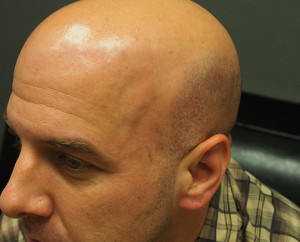Most consumers and patients take for granted that “board certification” implies some level of expertise and qualification of a doctor. What does it ultimately mean to you? Why do we even bother with it? Is it to advertise achievement reflecting doctors’ credentials?
In the United States there are 24 approved medical specialty boards that are overseen by The American Board of Medical Specialties (ABMS), a not-for-profit organization. Certification by an ABMS Member Board has long been considered the gold standard in physician credentialing. To be ABMS board certified means that the physician has undergone formal educational and clinical training with adequate supervised activities a medical institution AFTER earning their medical degree. After this training, they must successfully pass a level of competence through written and oral examinations.
Hair transplant surgery is not a part of the ABMS so there really is not a board certified hair transplant surgeon in the traditional sense the public thinks of. This is mainly because there is no formal supervised training or credentialing in hair transplant surgery. There is no curriculum and no oversight. There is no place to formally learn to become a hair transplant surgeon. To date, the only way to learn how to perform hair transplant surgery is to read a book, attend a seminar, or become an apprentice to a doctor in the private practice of hair transplantation. We know of doctors who never performed a hair transplant surgery but only attended a seminar and within a week set up shop proclaiming that they were experts at Follicular Unit Transplants. If there was truly a board or some sort of governing body, the physicians who learn the field through an overnight effort would have been discredited and alienated from his/her peers. But this is not what happens because hair transplant surgery is not considered mainstream surgery and anyone with a medical degree (even straight out of medical school with no training) can legally perform it. Unfortunately, a license to practice any or all specialties of medicine comes after 4 years of medical school and an internship and with that completed, a doctor could proclaim themselves even a neurosurgeon; however, no hospital would allow this overnight sensation to practice neurosurgery.
Recognizing the need to become part of the mainstream, in the mid 1990’s the American Board of Hair Restoration Surgery was formed to independently certify hair transplant surgeons. The Board requires recommendations for other doctors and 100 hair transplant surgeries to qualify to take the Board’s examination. But the board can not certify adequate supervised training, as there is none. It is also powerless in its structure to monitor any doctor’s training or enforce any form of discipline. Why? Because there is no place for a physician to train to become a hair transplant surgeon. There is no education/training center. There is no residency. There is no fellowship in the traditional sense. Thus, the term “board certified” hair transplant surgeon is NOT the same nor does it hold the same value as “board certified” in the common sense that we think of a board certified plastic surgeon or neurosurgeon. In fact, states like California forbid doctors to use the term ‘certification’ unless it reflects the American Board of Medical Specialties’ endorsement, which is not the case today, nor should it be. The reality of this training process is that this is a one surgery field. Today, I know personally of doctors who started doing FUE after only attending one ISHRS meeting. When I spoke to the doctors about their results from the FUE they were doing in the first 6 months and they admitted to me privately, that they had very significant failures in their initial treated patient population.
This is why many hair transplant surgeons are not board certified in hair transplant surgery. Drs. Rassman, Pak, and Kim are not board certified in hair transplant surgery mainly because they felt that it had little significance to their practice or credibility. Since Dr. Rassman is widely regarded as one of the pioneers of modern day follicular unit transplantation (from the early 1990s) and even the innovator who started the FUE technique in 2002, his reputation stands on its own without a certification. When Dr. Rassman started performing hair transplant surgeries in 1991, the standard was ‘plugs’. He visited doctors who had great reputations in the hair transplant field and watched what they did. He figured out that the techniques that were used did not meet his standards and he refused to adopt that technique. He learned the details of how it was done by others over a period of a year and then he pioneered (a risky move) what eventually became the standard for hair transplantation across the world.
Dr. Pak was part of the original research team (working as an engineer) that developed FUE instrumentation from the mid-90’s (that eventually ended up in a U.S. Pat. No. 6,572,625 licensed to Restoration Robotics for the Artas® Robot) and has been trained exclusively by Dr. Rassman as a hair transplant surgeon. Dr Pak’s hair transplant surgery education was in the traditional sense of a fellowship or apprenticeship by working one on one with a mentor, Dr. Rassman, for more than a year. For that matter many well respected physicians have gotten their start from Dr. Rassman in the 1990’s and 2000’s. To this day, Dr. Rassman receives several emails a month from physicians requesting private fellowship training. In fact, we even found on multiple occasion, doctors from a foreign country that display photos of Dr. Rassman standing next to themselves to advertise to their patients that they were trained under him. These pictures were taken at conferences.
Misrepresentation in this industry are common. A series of website or “forums” or ‘Networks’ exist that define the best doctors in the world for its viewers. To get such endorsements, doctors must join that organization and pay a monthly fee in excess of over $1000/month. The implication is that if the doctor is not endorsed by that particular ‘forum’ that they are not amongst the “elite” and highly respected doctors in the world. The ‘forums’ or ‘networks’ collect these prospective patients and dole them out to the doctor so that the doctor might get there money back through professional fees. It becomes an interesting way to advertise through third party ‘endorsements’. To be as blunt as possible, these ‘forums’ or ‘networks’ are not neutral patient advocate sites but a subtle way for doctors to advertise by paying a membership fee. As I know most of the really great hair transplant surgeons world-wide, I know who is good, who is very good and who is not so good. The good and the bad surgeons may inevitably be endorsed by the website as long as the payment is made. I do not know them all. So you, the consumer, must be really careful if you accept the endorsements of these organizations without doing your research.
In the end the consumers (patients) are left not knowing what to believe. Board certification does not mean much if no one can enforce a certain standard of care or even oversee the training of surgeons. The Forum that endorse doctors do it for their profit, so they should not be trusted without really doing your own research. Sadly many great hair transplant surgeons are intermingled with the sleazy opportunistic ones and the entire profession is dragged through the mud as a whole but the consumer who do not get what they paid for, what they expected and end up blaming the ‘sourcing’ for their doctors.
Tags: hair transplant, surgery, surgeon, board certified










 Nawaz Sharif could fill up the frontal area with another procedure and get some more hair on the top of his head, but as has a Norwood class 7 balding pattern with what appears to be fine hair, I doubt that he will ever look completely full.
Nawaz Sharif could fill up the frontal area with another procedure and get some more hair on the top of his head, but as has a Norwood class 7 balding pattern with what appears to be fine hair, I doubt that he will ever look completely full.